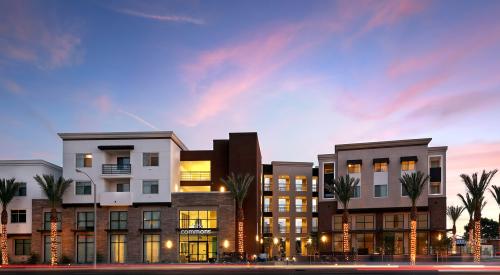When examining whether low-density sprawl or maximum-density development would be best suited for ameliorating the current housing shortage in America’s metro areas, researchers and economists concluded in a new report that neither option suffices.
In the face of greater housing underproduction than previously anticipated, more than 5 percent of the total national housing inventory, a third way is being championed by report authors and housing researchers and economists: middle-density “smart growth.”
The report offers this development formula as a public-private solution that adds density within the existing form of a metro area while lowering environmental and construction costs, and at a macro level, driving up national GDP and tax revenue. New smart growth housing projects would be created around extant density, distance to transit stops, and the share of driving commuters in an area.
The report warns that failure to solve the underproduction issue holds down the country’s GDP, creates negative environmental impact, and pushes individuals with families and lower incomes farther from urban employment hubs. To bring about smart growth, the report posits four necessary policy changes, including impact-fee revisions, property-tax abatement, and the establishment of “by-right” approvals in high-density areas.
Mike Kingsella, a report author and the executive director of the nonprofit smart growth advocacy group Up For Growth National Coalition, issued a challenge to local, state, and federal legislators in a statement: “Come together to pass meaningful reforms encouraging new development for all housing types, including affordable. The status quo is unacceptable and unsustainable.”













